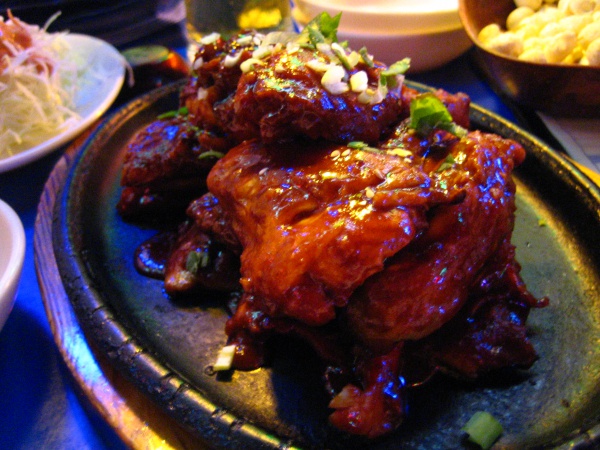Facts About Korean fried chicken
Korean fried chicken, often referred to as KFC or "chikin" in Korea, is a beloved staple in South Korea, showcasing an array of delectable dishes. From the classic "huraideu-chikin" to the spicy "yangnyeom-chikin" this culinary treat is enjoyed in various forms—be it a meal, appetizer, snack, or anju (food served with alcohol).
What distinguishes Korean fried chicken is its unique double-frying technique, which achieves a crunchier and less greasy skin compared to traditional American fried chicken. The chicken is seasoned with a blend of spices, sugar, and salt both before and after frying, and it's frequently coated with savory sauces to ensure each bite is flavorful. It’s typically accompanied by pickled radishes and paired with beer or a carbonated beverage for the ideal combination.
In terms of terminology, "chikin" refers to fried chicken, while "dak" is the term for domesticated fowl. The history of Korean fried chicken dates back to the Korean War, when American troops introduced soul-food-style fried chicken to Korea. The modern love for chicken began in the late 1960s, and the first Korean fried chicken franchise, Lims Chicken, opened in 1977.
There are many varieties to explore:
- "Huraideu-chikin" (classic fried chicken)
- "Yangnyeom-chikin" (seasoned chicken)
- "Banban" (half-seasoned, half-plain chicken)
- "Ganjang-chikin" (soy sauce chicken)
- "Padak" (scallion chicken)
You can also find different styles like "tongdak" (whole chicken) and "sunsal-chikin" (boneless chicken). Prominent Korean fried chicken brands include BHC, Bonchon Chicken, Kyochon, and Nene Chicken.
In recent years, Korean fried chicken chains have expanded globally to regions such as the United States, China, Canada, and Southeast Asia, owing to market saturation in Korea. Its distinctive flavors and preparation methods continue to captivate food enthusiasts around the world, making Korean fried chicken a global phenomenon.

 North Korea
North Korea